Florida ecosystems encompass a diverse array of habitats, including wetlands like the Everglades, coastal environments with mangroves and seagrasses, unique upland areas such as the Lake Wales Ridge and scrub habitats, and distinctive features like sinkhole lakes and tidal flats. These ecosystems support a rich biodiversity, including endemic species like the Florida scrub-jay, manatees, and various reptiles and birds. Conservation efforts aim to address threats like habitat loss, urbanization, and climate change to maintain the health and resilience of Florida's ecosystems.
On this page you can see most of the ecosystems found if Florida with a brief description of each.

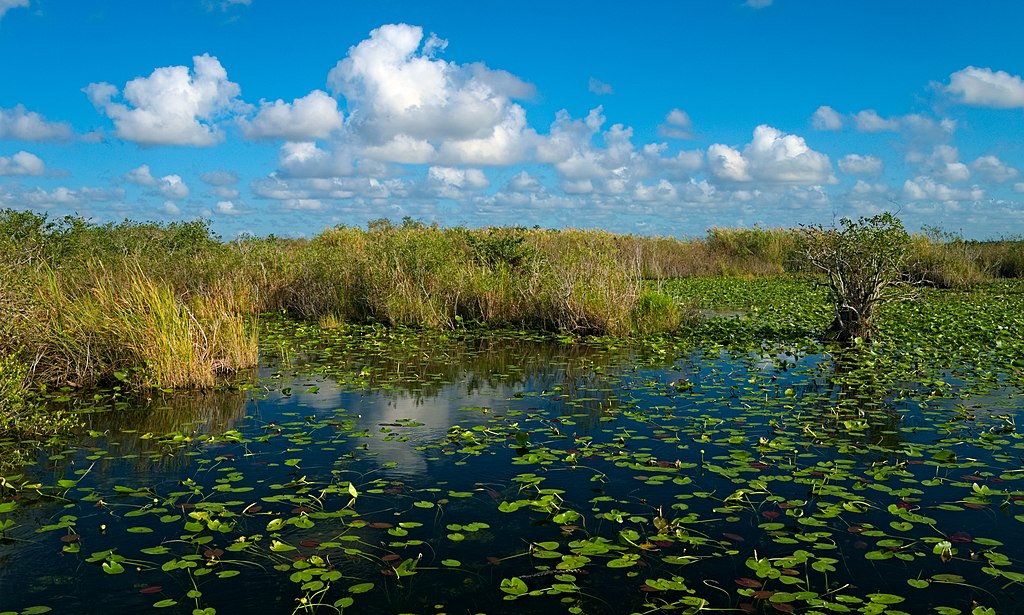
The Everglades is a unique and expansive ecosystem located in southern Florida, USA. Often referred to as a "river of grass," it is characterized by slow-moving, shallow water flowing through sawgrass marshes, cypress swamps, and mangrove forests. The system encompasses a diverse array of habitats that support a rich biodiversity, including numerous species of birds, reptiles, and mammals. The Everglades also serves as a critical recharge area for the Biscayne Aquifer, providing freshwater for both human and natural communities. However, the ecosystem faces significant challenges such as habitat loss, invasive species, and altered water flow due to human activities, emphasizing the importance of conservation efforts to preserve this vital wetland system.

Florida scrubs refer to a distinctive and endangered terrestrial ecosystem found in Florida, USA, characterized by well-drained, sandy soils and an open, low-growing vegetation structure. These habitats are often dominated by drought-tolerant plants such as Florida rosemary (Ceratiola ericoides), sand pine (Pinus clausa), and various species of oaks, including Chapman's oak (Quercus chapmanii). Florida scrubs are adapted to frequent wildfires, which help maintain the open canopy and prevent the encroachment of woody vegetation. These unique ecosystems support a variety of endemic plant species and provide crucial habitat for rare and specialized fauna, including the Florida scrub-jay (Aphelocoma coerulescens), an endangered bird species. Unfortunately, Florida scrubs face threats from urban development, habitat fragmentation, and fire suppression, making their conservation a priority for preserving biodiversity in the state.

Pine flatwoods is a distinctive ecosystem found in the southeastern United States, including Florida. It is characterized by a flat to gently rolling landscape dominated by a variety of pine species, most commonly the longleaf pine (Pinus palustris) and slash pine (Pinus elliottii). The groundcover typically consists of grasses, such as wiregrass (Aristida stricta), and a diverse understory of shrubs, including gallberry (Ilex glabra) and saw palmetto (Serenoa repens). Pine flatwoods are adapted to frequent natural fires, which help maintain an open canopy and promote the growth of fire-adapted plant species. This ecosystem supports a rich biodiversity, including numerous bird species, insects, and small mammals. Pine flatwoods also provide essential habitat for the endangered red-cockaded woodpecker (Leuconotopicus borealis) and other wildlife. However, like many natural ecosystems, pine flatwoods are threatened by urbanization, altered fire regimes, and habitat fragmentation, underscoring the importance of conservation efforts to preserve this ecologically valuable landscape.

A cypress swamp is a unique and ecologically important wetland ecosystem characterized by the prevalence of cypress trees, particularly bald cypress (Taxodium distichum) and pond cypress (Taxodium ascendens). Found in various regions, including the southeastern United States, these swamps are typically situated in low-lying areas with slow-moving or stagnant water. The towering cypress trees are well-adapted to wet conditions, often featuring distinctive knees, or pneumatophores, that protrude above the water's surface, aiding in gas exchange. The shaded understory of cypress swamps may include other vegetation like water tupelo (Nyssa aquatica), ferns, and various aquatic plants. These swamps provide critical habitat for a diverse array of wildlife, including amphibians, reptiles, birds, and mammals. Additionally, cypress swamps play essential roles in water filtration, flood control, and carbon sequestration. Unfortunately, these ecosystems face threats from habitat destruction, altered hydrology, and pollution, emphasizing the need for conservation efforts to protect their ecological integrity.
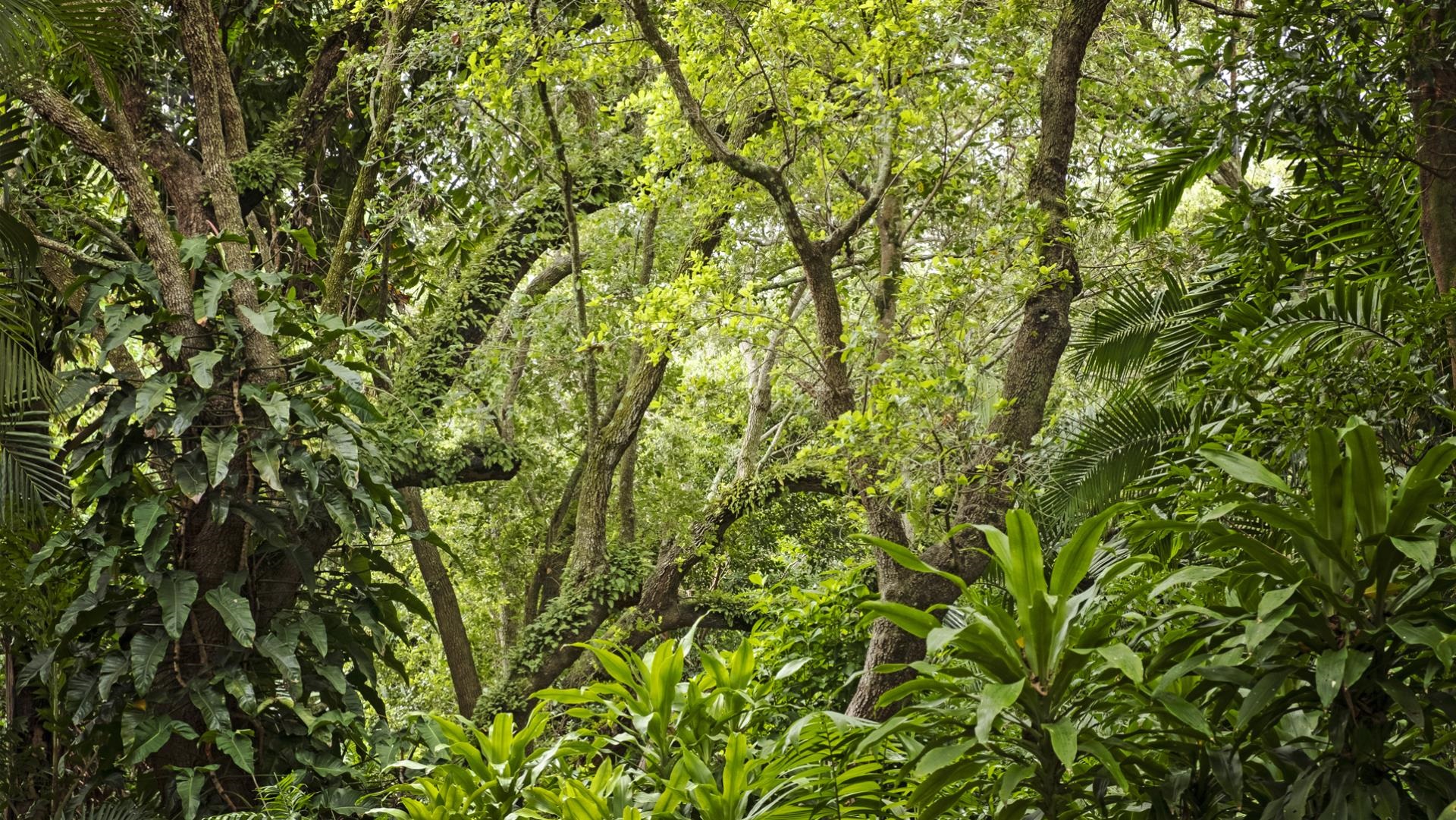
Hardwood hammocks are lush and elevated forested ecosystems found in southern Florida, particularly in the Everglades and the Florida Keys. They stand out amidst the surrounding wetlands and marshes, often occurring on slightly higher ground, forming "islands" of hardwood vegetation. Dominated by a diverse array of hardwood tree species, including live oak (Quercus virginiana), gumbo-limbo (Bursera simaruba), and West Indian mahogany (Swietenia mahagoni), hardwood hammocks create a dense and shaded canopy.
Beneath the canopy, the understory is characterized by various shrubs, ferns, and herbaceous plants adapted to the subtropical climate. The diverse vegetation in hardwood hammocks supports a rich and unique biodiversity, providing habitat for numerous bird species, insects, reptiles, and mammals.
These ecosystems are important refuges for both resident and migratory wildlife, offering protection during storms and serving as oases of biodiversity in the surrounding landscape. However, like many ecosystems in Florida, hardwood hammocks face threats such as habitat destruction due to urbanization, invasive species encroachment, and altered hydrological patterns. Conservation efforts are essential to safeguard the ecological balance and biological diversity of hardwood hammocks in Florida.

Florida boasts a diverse and extensive marine ecosystem, given its extensive coastline, numerous bays, estuaries, coral reefs, and the Gulf Stream current. The state's marine environment supports a rich variety of marine life, making it a crucial component of global biodiversity. Here are some key elements of Florida's marine ecosystem:
Coral Reefs: Florida is home to the only barrier coral reef system in the continental United States, primarily found in the Florida Keys. These reefs support a vibrant community of corals, sponges, fish, and other marine organisms.
Estuaries and Mangroves: Florida's estuaries, where freshwater from rivers meets saltwater from the ocean, are vital nurseries for many marine species. Mangrove forests along the coast provide important habitat for juvenile fish and invertebrates.
Seagrass Beds: Extensive seagrass meadows are found in Florida's shallow coastal waters. These areas serve as critical habitat for numerous marine species, including manatees, sea turtles, and various fish.
Gulf Stream: The Gulf Stream, a powerful warm ocean current, flows along Florida's eastern coast. It influences the climate, brings in nutrients, and supports a diverse array of marine life, including pelagic fish and marine mammals.
Marine Mammals: Florida's waters are home to several marine mammal species, including dolphins, manatees, and whales. The coastal areas and estuaries provide essential habitats for these species.
Fish Diversity: The marine ecosystem of Florida supports a wide variety of fish species, ranging from commercially important ones like snapper and grouper to iconic game fish such as tarpon and snook.
Birdlife: Numerous bird species inhabit Florida's coastal areas, including shorebirds, wading birds, and seabirds. Coastal habitats serve as breeding grounds, roosting sites, and foraging areas for many bird species.
Despite its ecological richness, Florida's marine ecosystem faces various challenges, including habitat degradation, pollution, overfishing, and the impacts of climate change. Conservation efforts and sustainable practices are crucial to preserving the health and biodiversity of Florida's marine environment.
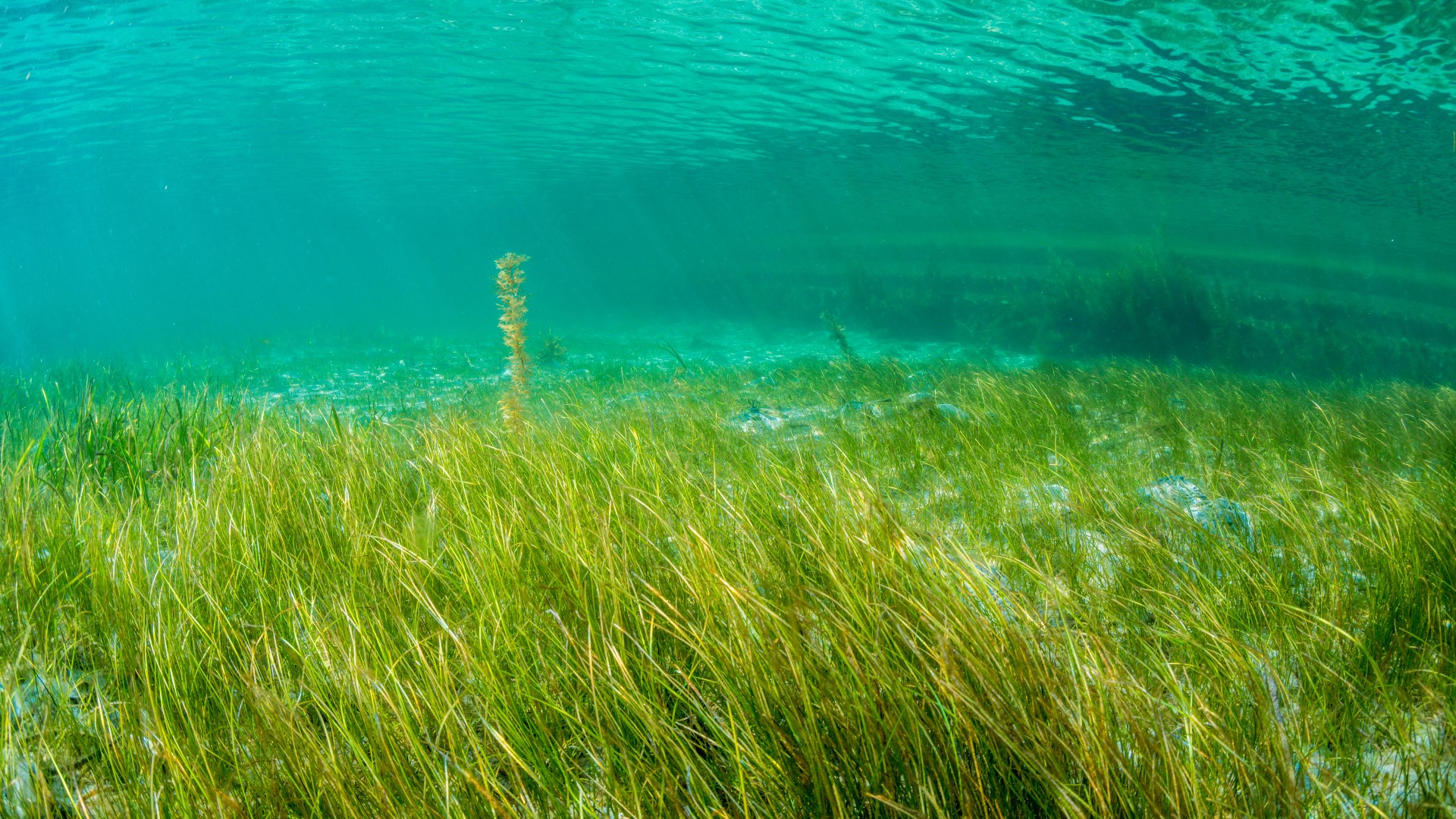
Florida's seagrass beds, vital components of the state's marine ecosystem, consist of submerged flowering plants thriving in shallow coastal waters. These biodiverse underwater meadows serve as critical nurseries for marine life, offering shelter and foraging grounds for juvenile fish and invertebrates. Beyond supporting a variety of commercially important species, seagrass beds contribute to water quality improvement, shoreline stabilization, and carbon sequestration. However, they face threats from coastal development, boat-related impacts, and pollution. Conservation efforts, including regulatory measures and restoration initiatives, are essential to safeguard the ecological significance of Florida's seagrass beds and ensure the sustainability of the marine environment.

Florida's mangrove forests are coastal ecosystems characterized by the presence of salt-tolerant mangrove trees, which play a crucial role in supporting biodiversity and maintaining coastal health. Three main species of mangroves are found in Florida: red mangrove (Rhizophora mangle), black mangrove (Avicennia germinans), and white mangrove (Laguncularia racemosa). These trees thrive in the transition zone between land and sea, with their intricate root systems providing stability to coastal areas and serving as nurseries for various marine species. Red mangroves are easily recognizable by their prop roots that extend above the water's surface. Mangrove forests act as natural buffers against storm surge, protect against erosion, and improve water quality by filtering pollutants. They are vital habitats for a diverse array of fish, crustaceans, and birds, making them essential components of Florida's coastal ecosystems. However, mangroves face threats from habitat loss due to development, altered hydrology, and climate change, underscoring the importance of conservation efforts to preserve these valuable coastal ecosystems.
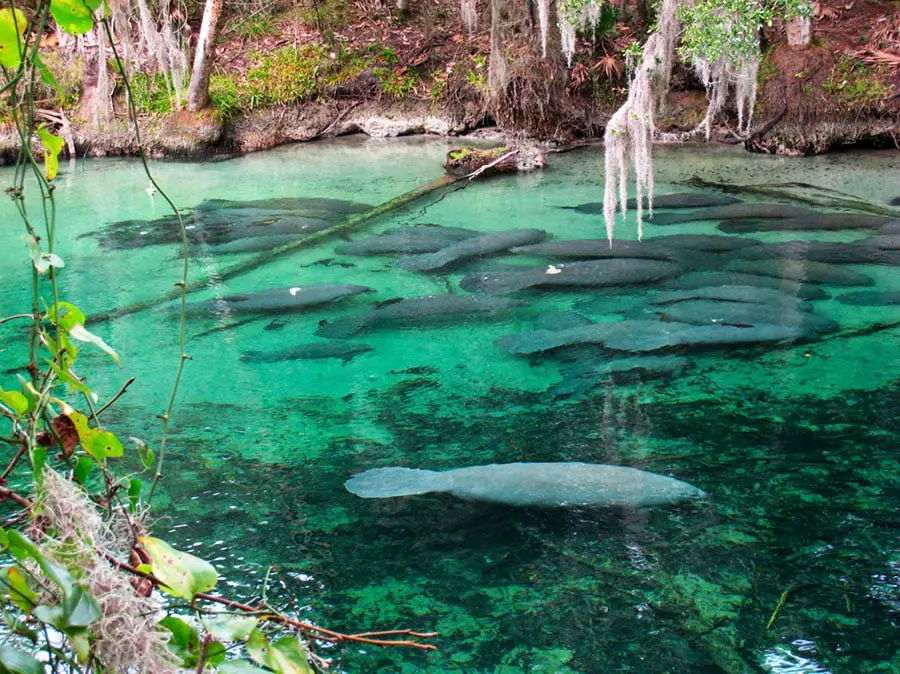
Florida is renowned for its numerous freshwater springs, which are unique geological formations that discharge clear and cool water from underground aquifers. These springs vary in size and characteristics but share common features such as crystal-clear waters, limestone basins, and lush surrounding landscapes. Some prominent springs include Silver Springs, Wakulla Springs, and Ichetucknee Springs. The water from these springs remains a consistent temperature throughout the year, making them popular for recreational activities like swimming, snorkeling, and paddling. The springs also support diverse ecosystems, with aquatic plants, fish, and invertebrates thriving in the clear waters. The constant flow of fresh water from the springs contributes to the health of surrounding rivers and enhances water quality. However, these ecosystems face challenges from increased human activity, pollution, and declining water levels, emphasizing the need for conservation measures to protect Florida's unique freshwater springs.
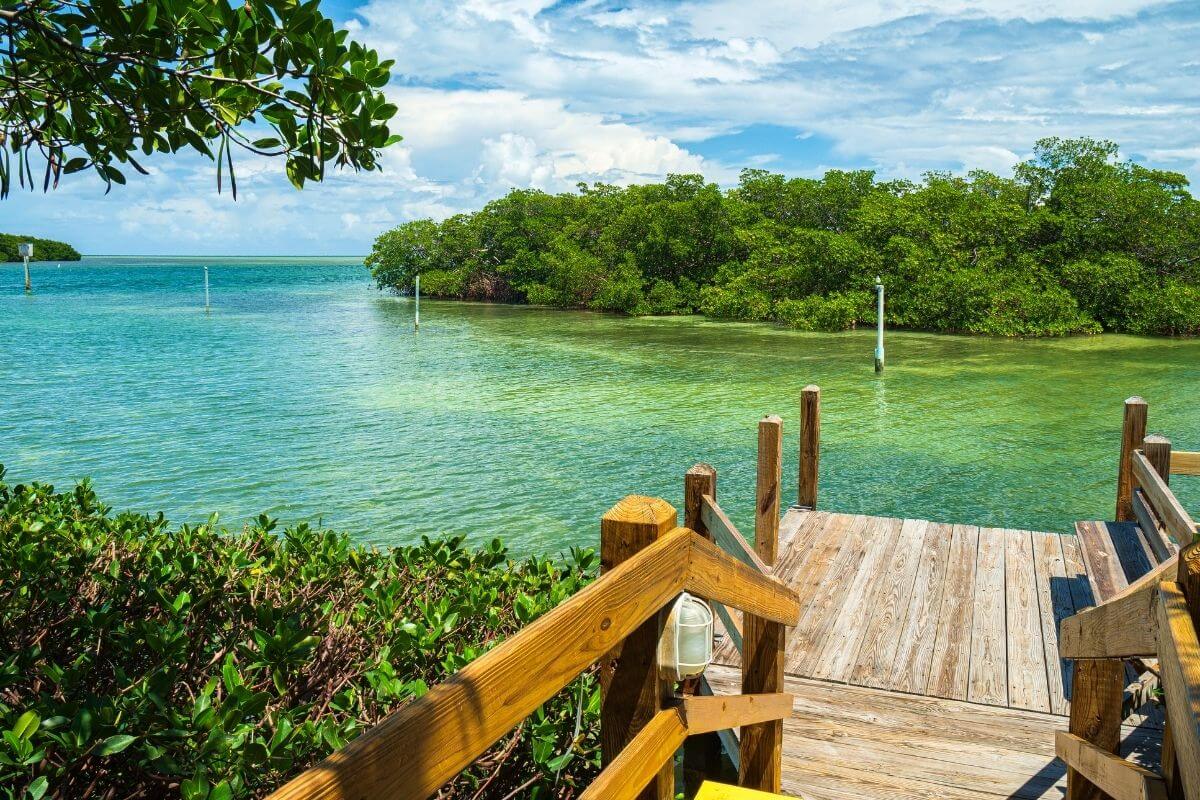
The Florida Keys is a coral cay archipelago located off the southern coast of Florida, forming a 120-mile-long chain of islands connected by the Overseas Highway. Known for its stunning natural beauty and vibrant marine life, the Keys are a popular tourist destination. Key Largo, Islamorada, Marathon, Big Pine Key, and Key West are some of the major islands. The region is renowned for its coral reefs, including the third-largest barrier reef in the world, making it a premier destination for snorkeling and diving. The tropical climate, turquoise waters, and white sandy beaches attract visitors seeking outdoor activities such as fishing, boating, and kayaking. The unique blend of Caribbean and Floridian cultures is reflected in the laid-back atmosphere, colorful architecture, and diverse cuisine. The Florida Keys are also home to various wildlife, including Key deer and a variety of bird species. However, the area faces challenges related to sea-level rise, coral reef degradation, and hurricane impacts, emphasizing the importance of conservation and sustainable practices to preserve this ecological gem.

Florida prairies, also known as dry prairies or freshwater marshes, are ecosystems characterized by open grasslands and herbaceous vegetation. Unlike the more well-known wet prairies, Florida prairies experience periodic droughts, leading to drier conditions. These prairies are typically found in flat or gently rolling landscapes in central and northern Florida, often in areas with sandy soils. Wiregrass (Aristida stricta) is a dominant grass species in these prairies, along with other herbaceous plants adapted to the fire-dependent ecology of the region.
Fire plays a crucial role in maintaining Florida prairies by preventing the encroachment of woody vegetation and promoting the growth of fire-adapted plants. Native species such as bluestem grasses and wildflowers contribute to the biodiversity of these ecosystems.
Florida prairies support a variety of wildlife, including insects, reptiles, birds, and mammals. Some bird species, such as the Florida burrowing owl, utilize the open landscapes for nesting. The eastern indigo snake, an endangered species, is also associated with these prairies.
Despite their ecological importance, Florida prairies face threats from habitat loss due to agriculture, urban development, and altered fire regimes. Conservation efforts involve restoring and maintaining the natural fire cycle, preserving remaining prairie habitats, and managing land use to sustain the biodiversity of these unique ecosystems.
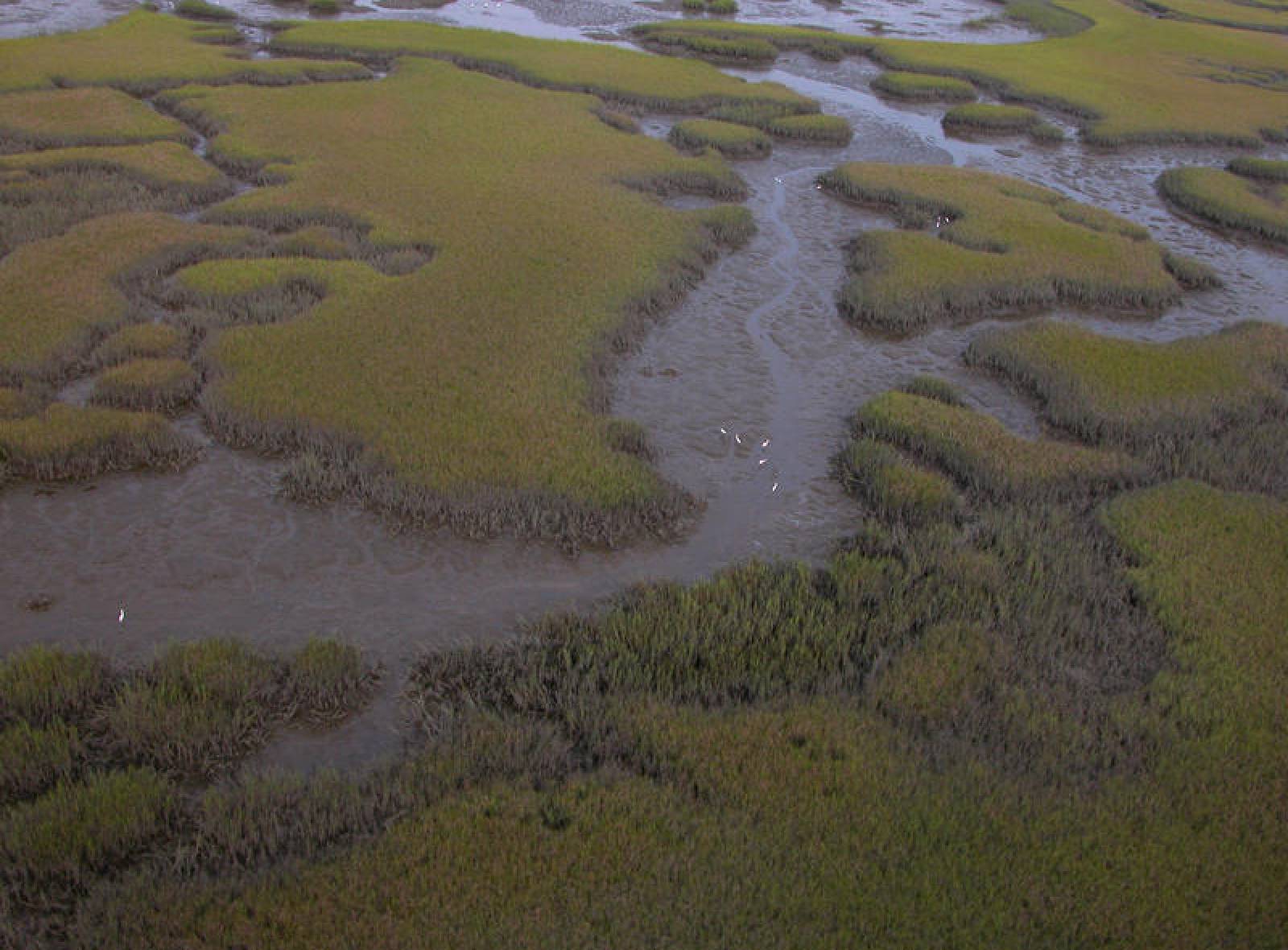
Florida salt marshes are coastal ecosystems characterized by the presence of salt-tolerant vegetation, such as cordgrass (Spartina alterniflora) and black needlerush (Juncus roemerianus). These marshes are situated in the transition zone between terrestrial and aquatic environments, where freshwater from rivers and tidal saltwater mix. The unique conditions of salt marshes contribute to their ecological significance in coastal regions.
Salt marshes serve as crucial nurseries for many marine species, providing shelter and feeding grounds for juvenile fish and invertebrates. The dense vegetation helps stabilize sediments, preventing erosion and maintaining the integrity of coastal ecosystems. Additionally, salt marshes act as natural filters, trapping pollutants and improving water quality.
These ecosystems are dynamic and undergo regular tidal fluctuations, experiencing both daily and seasonal changes in water levels. This dynamic nature is essential for nutrient cycling and productivity within the marsh.
Salt marshes in Florida are also vital habitats for a variety of bird species, including wading birds, shorebirds, and waterfowl. Additionally, they provide foraging areas for marine mammals and reptiles.
Despite their ecological importance, salt marshes face threats from human activities, including coastal development, dredging, and pollution. Climate change, with its associated sea-level rise and altered precipitation patterns, poses additional challenges. Conservation efforts focus on protecting and restoring these critical coastal ecosystems to ensure the continued health and resilience of Florida's salt marshes.
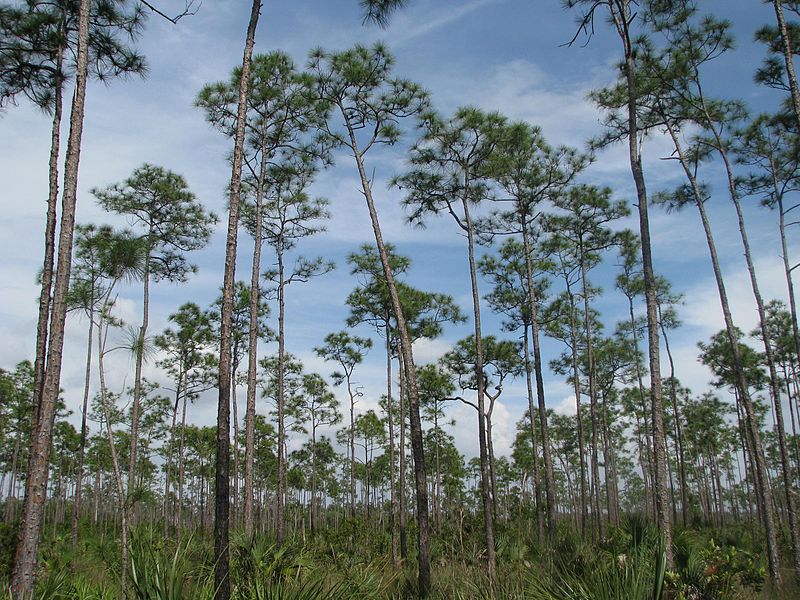
Florida Pine Rocklands are distinctive ecosystems characterized by a combination of open canopy pine forests, exposed limestone outcrops, and a diverse understory of shrubs and herbaceous plants. These ecosystems are typically found in parts of Miami-Dade County and the Florida Keys. The dominant tree species in Pine Rocklands is the South Florida slash pine (Pinus elliottii var. densa), which is adapted to the rocky substrate and frequent fires that shape this environment.
The understory of Pine Rocklands is rich in biodiversity, featuring a variety of plant species adapted to the well-drained soils and periodic fires. Notable flora includes saw palmetto (Serenoa repens), muhly grass (Muhlenbergia capillaris), and various wildflowers.
Pine Rocklands provide crucial habitat for a variety of wildlife, including the endangered Miami tiger beetle, the Florida bonneted bat, and the eastern indigo snake. Many bird species, including the threatened Florida bonneted bat, can also be found in these ecosystems.
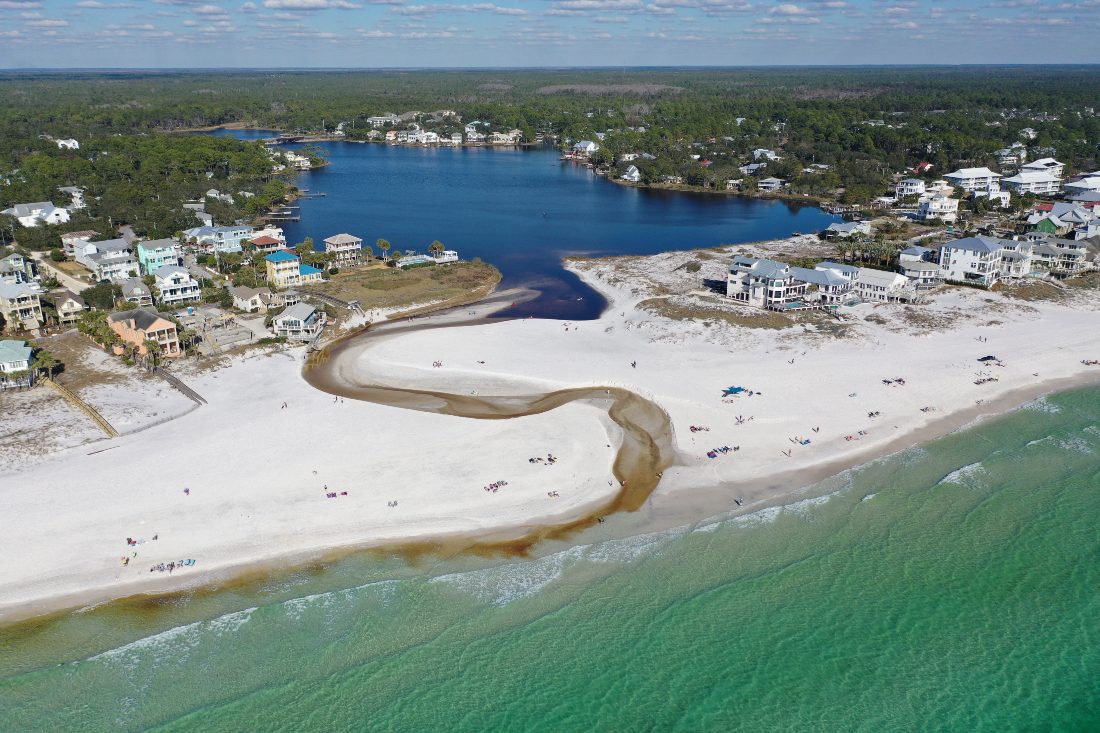
Florida coastal dunes are dynamic and ecologically significant ecosystems found along the sandy shorelines of the state. These dunes play a crucial role in protecting inland areas from storm surges and erosion. Characterized by shifting sands and adapted vegetation such as sea oats (Uniola paniculata), beach sunflower (Helianthus debilis), and dune grasses, coastal dunes provide stabilization, preventing the inland movement of sand and maintaining the integrity of the coastline. These habitats support a variety of specialized flora and fauna, including nesting sites for sea turtles and shorebirds. Despite their importance, coastal dunes face threats from human activities, including beachfront development, recreational disturbances, and sea-level rise associated with climate change. Conservation efforts focus on managing human impact, promoting dune restoration, and implementing measures to preserve the resilience and biodiversity of Florida's coastal dune ecosystems.
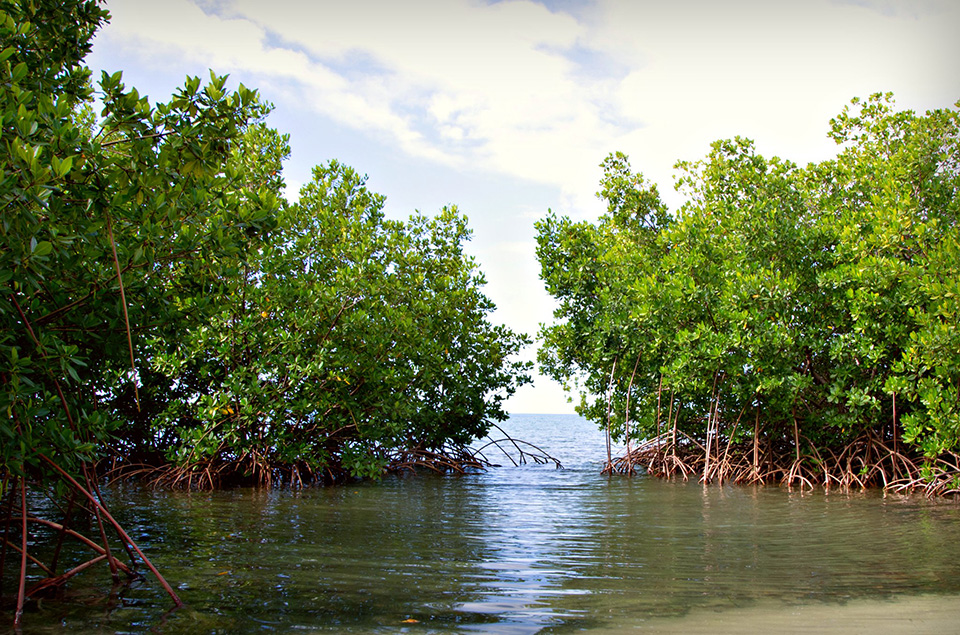
Florida estuaries represent dynamic and ecologically rich transitional zones where freshwater from rivers meets and mixes with saltwater from the sea. These vital ecosystems are characterized by fluctuating salinity levels, creating a unique habitat that supports a diverse array of marine life. Estuaries play a crucial role as nurseries for many fish and invertebrate species, providing shelter and abundant food resources for juvenile marine organisms. Mangrove forests and seagrass beds often fringe the edges of estuaries, contributing to the complexity and biodiversity of these areas. Popular examples in Florida include the Indian River Lagoon and the Tampa Bay estuary. Estuaries are essential for water filtration, nutrient cycling, and acting as buffers against storm surges. However, they face threats from pollution, habitat degradation, and overdevelopment along coastal areas. Conservation efforts emphasize protecting water quality, preserving critical habitats, and implementing sustainable practices to ensure the health and resilience of Florida's estuarine ecosystems.
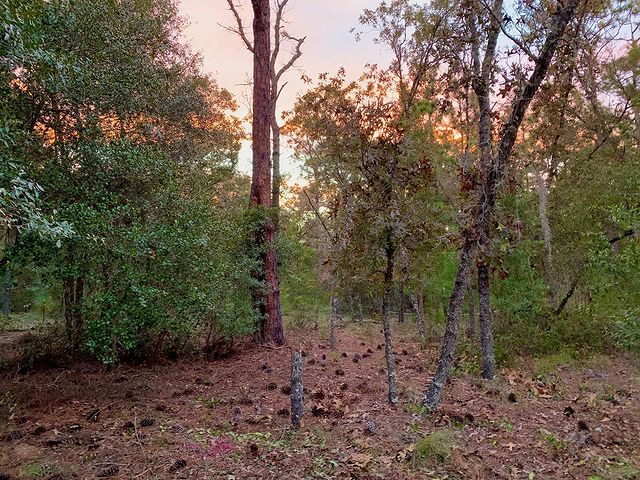
Florida sandhill communities are distinctive ecosystems characterized by sandy soils and an open canopy of longleaf pine trees (Pinus palustris). These communities are found in upland areas across the Florida peninsula. Wiregrass (Aristida stricta) is a common understory grass adapted to the frequent fires that shape these ecosystems. Sandhill Communities are known for their biodiversity, supporting a variety of plant species such as turkey oak (Quercus laevis), bluejack oak (Quercus incana), and various herbaceous plants.
These ecosystems provide essential habitat for a range of wildlife, including the gopher tortoise (Gopherus polyphemus), a keystone species that creates burrows used by numerous other animals. Additionally, Sandhill Communities are home to various bird species, reptiles, and invertebrates.
Fire plays a crucial role in maintaining the structure and composition of Sandhill Communities, preventing the encroachment of woody vegetation and promoting the growth of fire-adapted plant species. However, these ecosystems face threats from urbanization, habitat fragmentation, and altered fire regimes. Conservation efforts focus on restoring and maintaining natural fire cycles, preserving habitat connectivity, and protecting the unique flora and fauna of Florida sandhill communities.
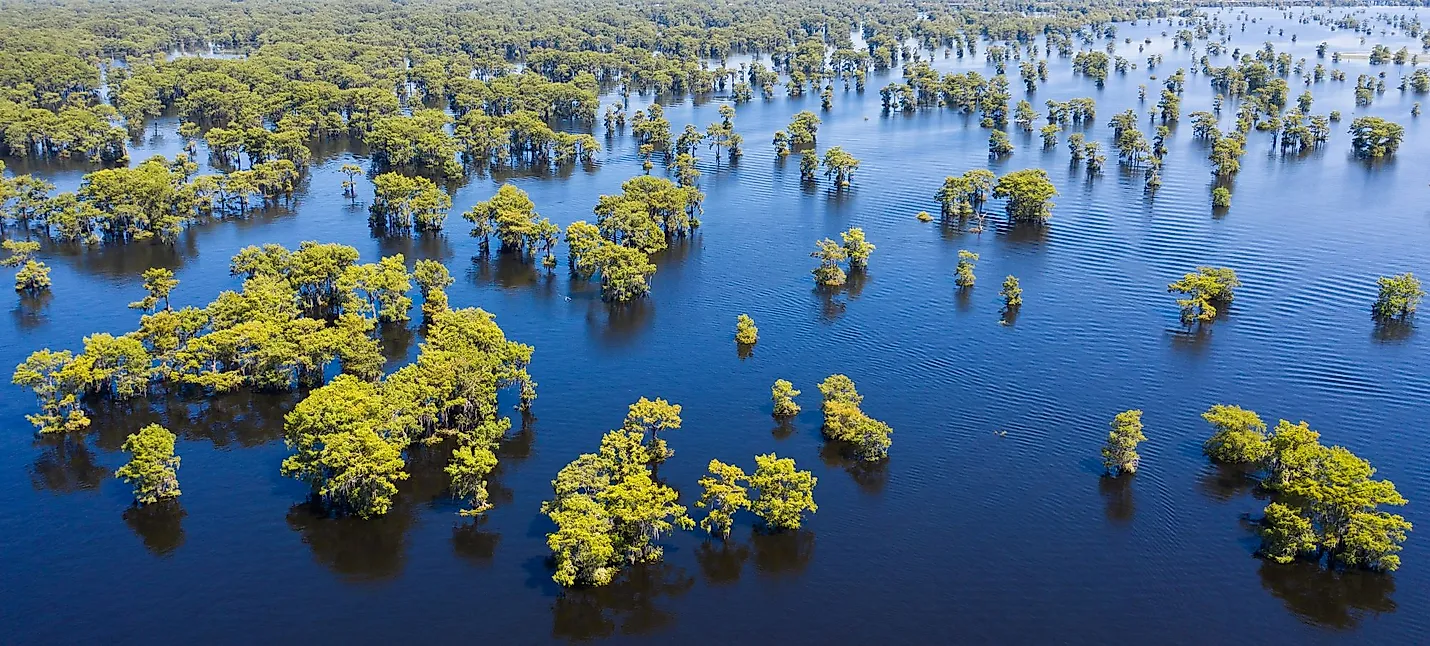
Florida Basin Swamps are freshwater wetland ecosystems characterized by slow-moving or stagnant water, typically situated in low-lying areas with poor drainage. These swamps are often associated with flat landscapes and are found in various regions across the state, including the central and northern parts of Florida. The vegetation in Basin Swamps varies but may include species such as cypress trees (Taxodium spp.), water tupelo (Nyssa aquatica), and black gum (Nyssa sylvatica).
The slow-moving water in Basin Swamps creates a habitat that supports a diverse array of plant and animal life. These swamps are crucial for maintaining water quality, as the vegetation helps filter pollutants and trap sediments. They also serve as important habitat for various bird species, amphibians, reptiles, and mammals.
Basin Swamps are susceptible to changes in hydrology, and alterations to natural water flow, such as drainage or changes in precipitation patterns, can impact the health of these ecosystems. Conservation efforts focus on maintaining natural hydrological processes, protecting water quality, and preserving the biodiversity of Florida Basin Swamps.
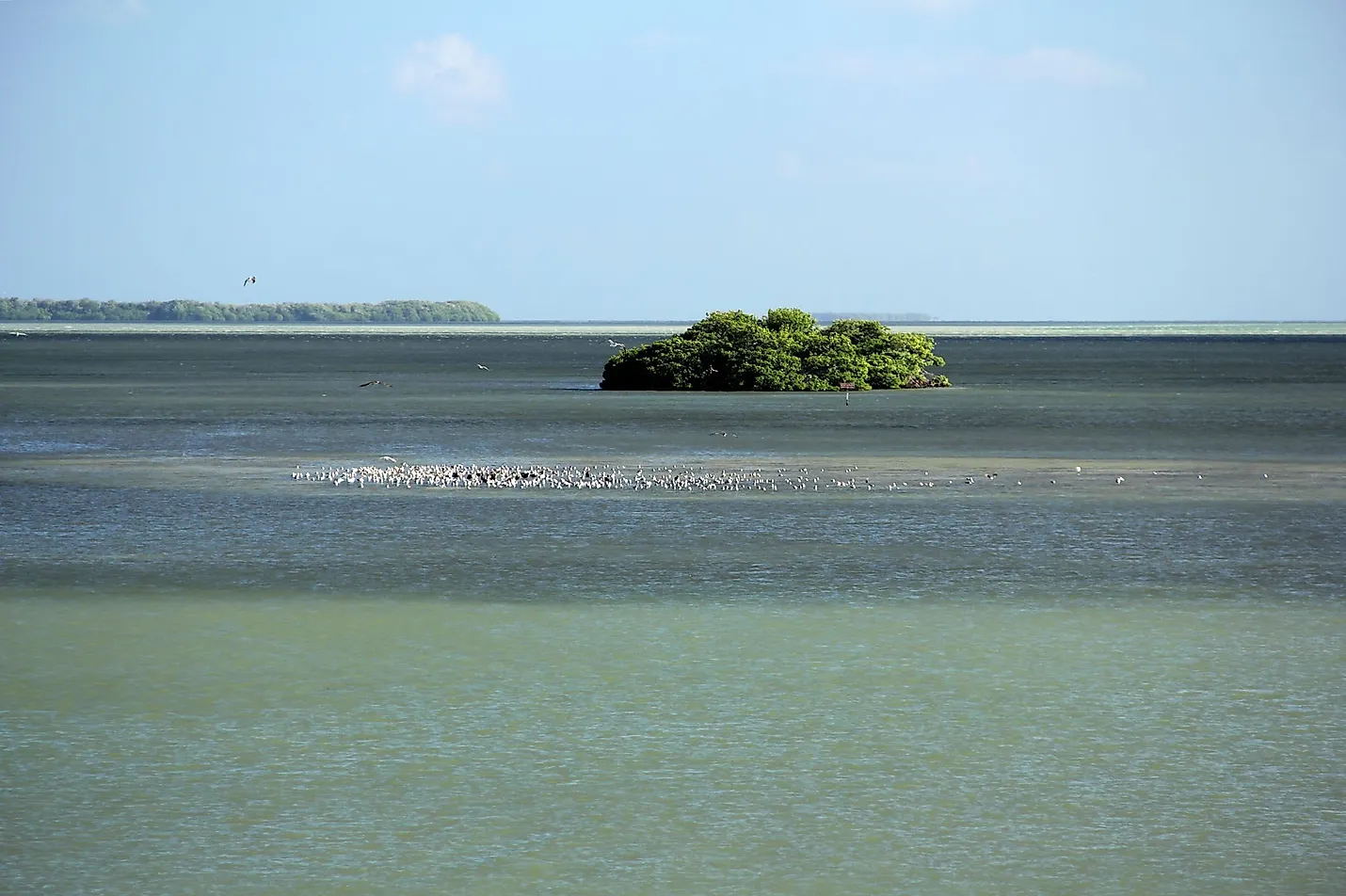
Florida Bay is a unique and ecologically diverse estuarine system located between the southern tip of the Florida peninsula and the Florida Keys. This shallow, brackish water body is part of the larger Everglades ecosystem and serves as a transition zone between the freshwater flowing from the Everglades and the saltwater of the Gulf of Mexico and the Atlantic Ocean. Florida Bay is characterized by its seagrass meadows, mangrove islands, and shallow flats.
Seagrass beds, including species like turtle grass (Thalassia testudinum) and shoal grass (Halodule wrightii), cover large areas of the bay and provide critical habitat for various marine species. Mangrove islands along the shoreline, dominated by red mangroves (Rhizophora mangle), offer additional nursery areas for fish and invertebrates.
The bay supports a diverse array of marine life, including fish such as snook, redfish, and tarpon, as well as crustaceans, mollusks, and a variety of bird species. Florida Bay is also a crucial foraging ground for wading birds, including roseate spoonbills, herons, and egrets.
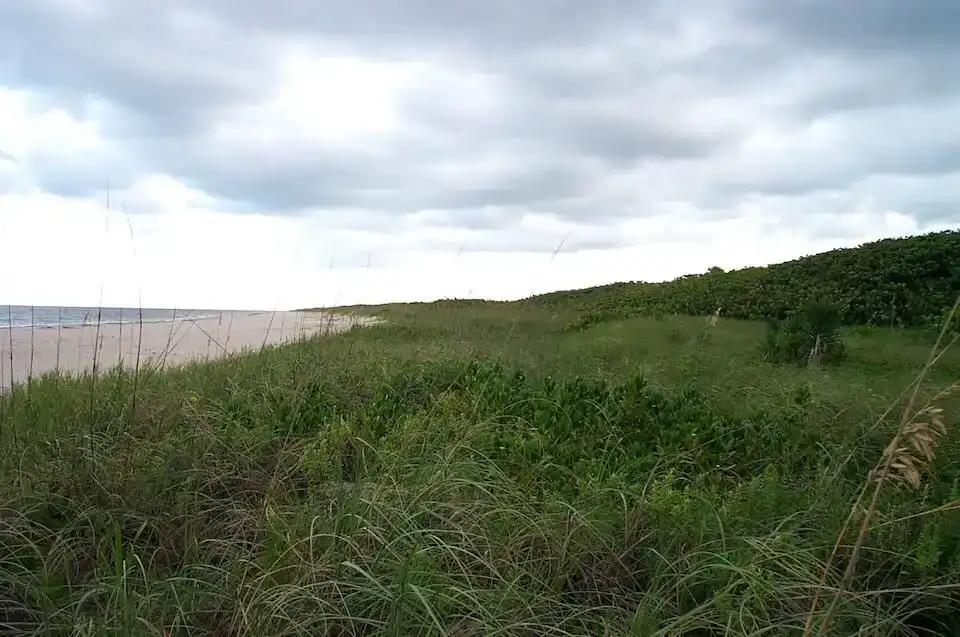
Florida Coastal Strand refers to a distinctive coastal ecosystem characterized by sandy shores, dune formations, and a variety of salt-tolerant vegetation. Located along the Atlantic and Gulf coasts, Coastal Strand ecosystems are adapted to the harsh conditions of salt spray, shifting sands, and occasional storm surges. Plant species such as sea oats (Uniola paniculata), beach sunflower (Helianthus debilis), and railroad vine (Ipomoea pes-caprae) play a crucial role in stabilizing dunes and preventing erosion. These habitats provide nesting sites for shorebirds, including seabirds and sea turtles, and support a unique assemblage of flora and fauna adapted to the dynamic coastal environment. Coastal Strand ecosystems face threats from human activities, including development, beach nourishment projects, and invasive species. Conservation efforts focus on protecting and restoring these habitats to maintain their ecological integrity and sustain the biodiversity of Florida's coastal zones.

Florida shell mounds are archaeological and ecological features found along the state's coastlines, particularly in the southwestern region. Created by indigenous peoples over thousands of years, these mounds consist of discarded shells, bones, and artifacts, forming large, elevated deposits. The shells primarily come from mollusks harvested for food. Archaeologically, shell mounds provide valuable insights into prehistoric human cultures, offering evidence of subsistence practices, tool usage, and societal changes over time.
Ecologically, shell mounds influence the surrounding landscape by altering soil composition and elevating local topography. Over time, vegetation adapts to these conditions, leading to the development of distinctive plant communities on and around the mounds.
However, shell mounds face threats from modern development, erosion, and sea-level rise. Conservation efforts involve documenting and preserving these archaeological sites, as well as considering their ecological role in shaping local biodiversity and landscapes.

Florida bayheads refer to unique and ecologically important wetland ecosystems found in parts of the state. These ecosystems are characterized by depressional areas with a high water table, often forming circular or elliptical patterns. Bayheads typically occur in flatwood landscapes and are surrounded by pine flatwoods or sandhill communities. The vegetation in bayheads includes various species adapted to wet conditions, such as titi (Cyrilla racemiflora), gallberry (Ilex glabra), and various ferns. These wetlands are often associated with seepage areas where groundwater emerges at the surface, maintaining consistently moist conditions.
Bayheads play a crucial role in supporting biodiversity, providing habitat for amphibians, reptiles, and a variety of bird species. The unique hydrological conditions in bayheads contribute to the development of specialized plant communities that are adapted to both wet and dry periods.
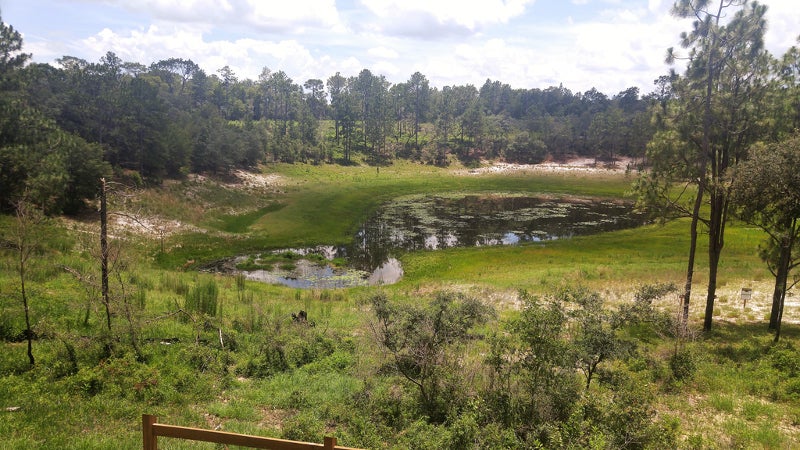
Florida sinkhole lakes are unique and often circular bodies of water formed through the geological process of sinkhole formation. Sinkholes are depressions in the Earth's surface caused by the dissolution of soluble bedrock, such as limestone, creating an underground cavity. When the cavity enlarges and reaches the surface, it forms a sinkhole. In Florida, where limestone is prevalent, sinkhole lakes are relatively common and contribute to the state's diverse hydrological landscape. These lakes can vary in size, from small ponds to larger bodies of water, and their depth can be influenced by the size and depth of the underlying sinkhole.
The water in sinkhole lakes is often clear and reflects the underlying geology of the region. These lakes may have unique hydrological characteristics, such as fluctuations in water levels based on the input and drainage through the underlying sinkhole system.
Sinkhole lakes in Florida can be important for local ecosystems, providing habitat for aquatic plants, fish, and other wildlife. However, they may also pose challenges for water resource management, as water levels can change rapidly.
Conservation efforts for sinkhole lakes often involve monitoring water quality, studying hydrological patterns, and managing land use to minimize potential contaminants. Understanding and preserving these natural features contribute to maintaining the ecological balance and uniqueness of Florida's landscape.
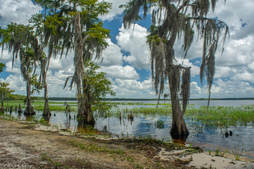
The Lake Wales Ridge is a distinctive and ecologically significant geographical feature in the central part of the Florida peninsula. Stretching from Polk County to Highlands County, this ancient sand ridge stands out as one of the highest elevations in the state. Comprising a series of rolling hills, the Lake Wales Ridge is characterized by well-drained, sandy soils with significant biodiversity. The ridge is home to a variety of unique and endemic plant species, adapted to the xeric conditions of the sandy substrate. Notable vegetation includes sand pine (Pinus clausa), scrub oaks (Quercus spp.), and a diverse array of wildflowers. The Lake Wales Ridge is recognized for its specialized ecosystems, such as scrub habitats and scrubby flatwoods, which support a range of wildlife, including the Florida scrub-jay, gopher tortoise, and various endemic plants. Despite its ecological significance, the Lake Wales Ridge faces threats from urbanization, habitat fragmentation, and altered fire regimes. Conservation efforts aim to protect and restore the unique biodiversity of this ancient and fragile landscape.

Florida Uplands refer to elevated areas in the state that are characterized by well-drained soils and diverse vegetation. These uplands can include various habitats such as sandhills, scrub, hardwood hammocks, and pine flatwoods. Sandhills are marked by rolling hills with sandy soils, and they often support longleaf pine ecosystems. Scrub habitats are characterized by xeric conditions and are home to a unique assemblage of plants adapted to nutrient-poor soils, including scrub oaks and the Florida scrub-jay. Hardwood hammocks are elevated areas dominated by deciduous trees, while pine flatwoods consist of low, flat terrain with a pine-dominated canopy.
Florida Uplands collectively contribute to the state's ecological diversity, providing habitat for a range of flora and fauna. Gopher tortoises, indigo snakes, and various bird species are often associated with these upland ecosystems. However, these habitats face threats such as habitat fragmentation, urban development, and altered fire regimes. Conservation efforts aim to protect and restore the natural balance of Florida Uplands to sustain their ecological integrity and preserve the biodiversity of the region.

Florida tidal flats are coastal ecosystems characterized by vast expanses of shallow, intertidal areas that are regularly inundated and exposed by the ebb and flow of tides. These flats are typically composed of soft sediments, such as mud or sand, and are found along estuaries, bays, and coastal areas. Tidal flats play a crucial role in supporting diverse marine life and serve as important habitats for various species of invertebrates, crustaceans, mollusks, and small fish. Shorebirds, wading birds, and waterfowl often forage in these areas, taking advantage of the rich food resources found in the mud or sand. Tidal flats are dynamic ecosystems influenced by tidal currents, providing essential functions such as nutrient cycling, water filtration, and sediment stabilization. Despite their ecological importance, tidal flats are vulnerable to habitat loss due to coastal development, pollution, and sea-level rise. Conservation efforts focus on preserving and restoring these vital coastal habitats to maintain their ecological functions and support the diverse array of species that depend on them.
Organize